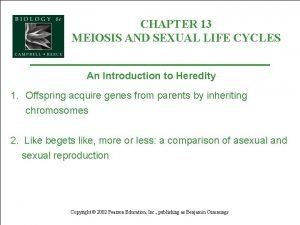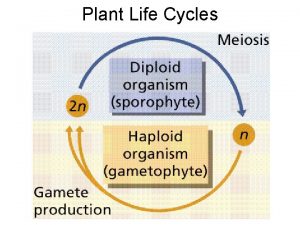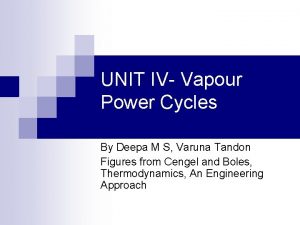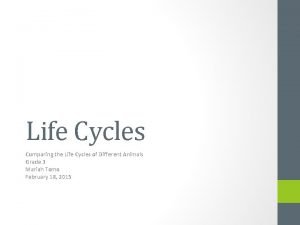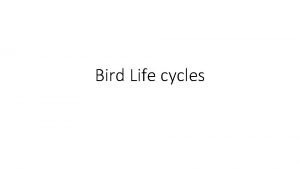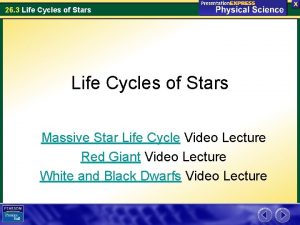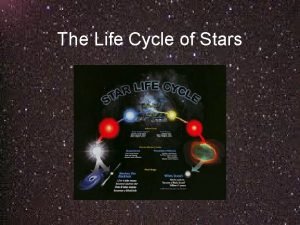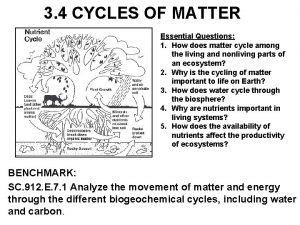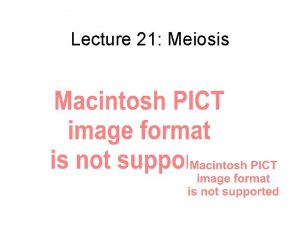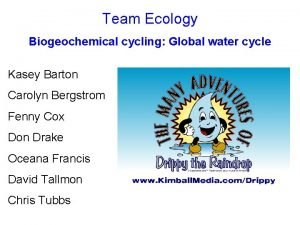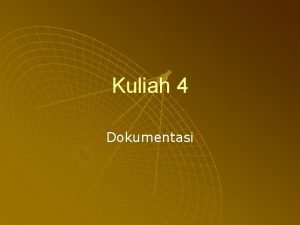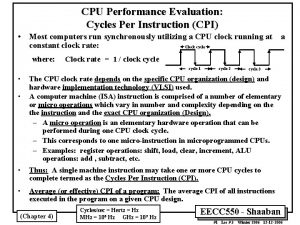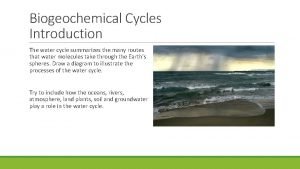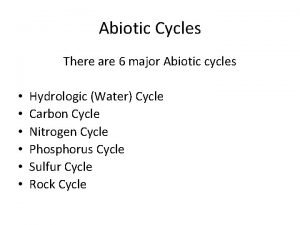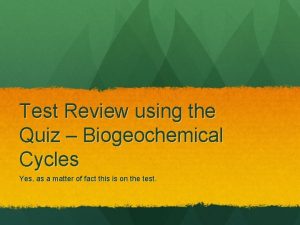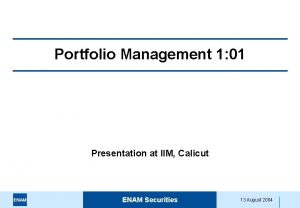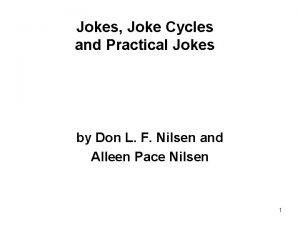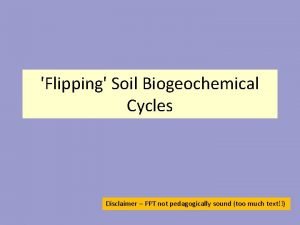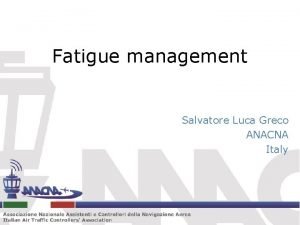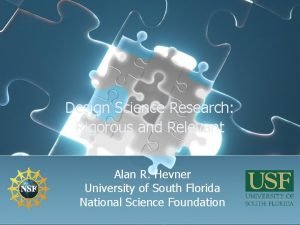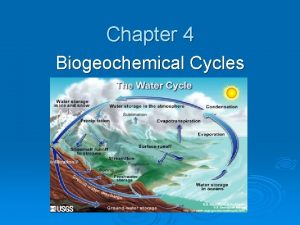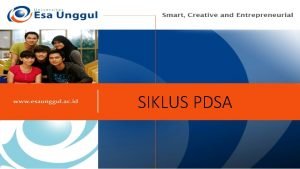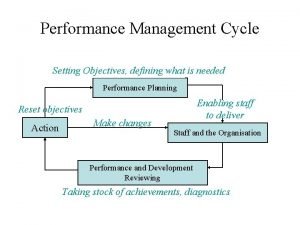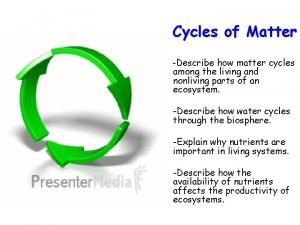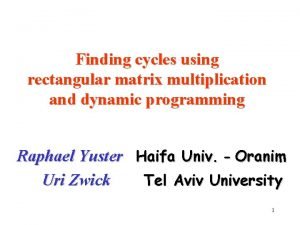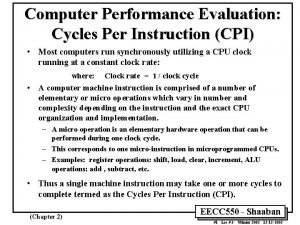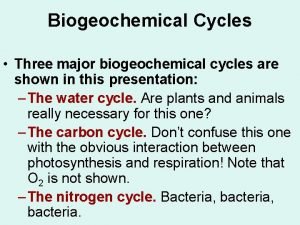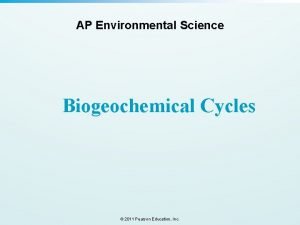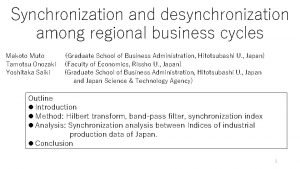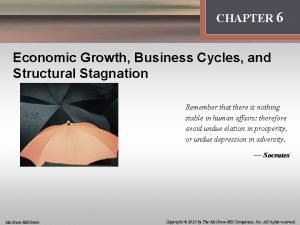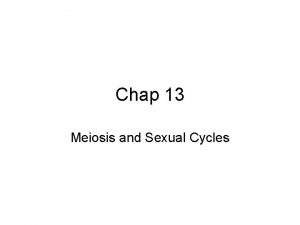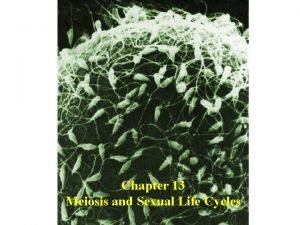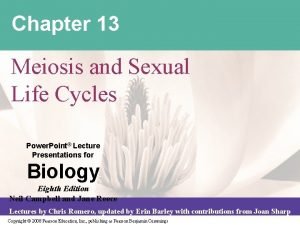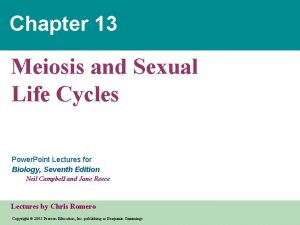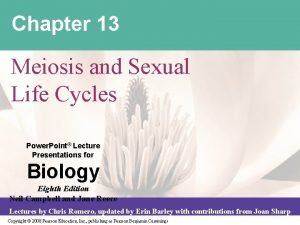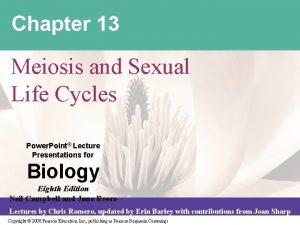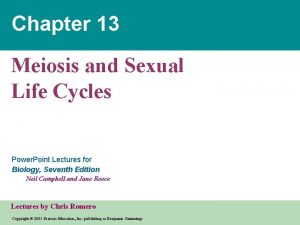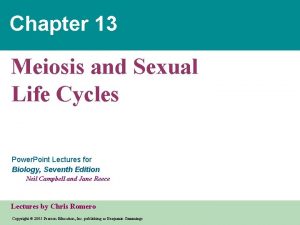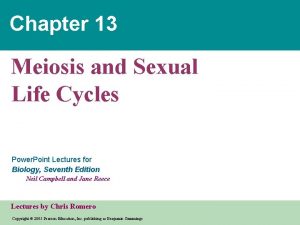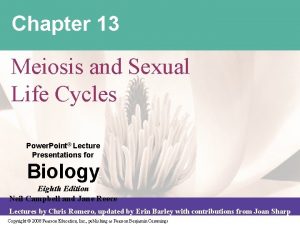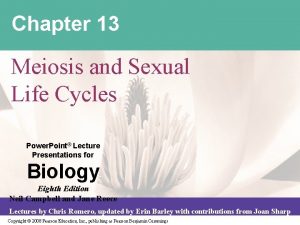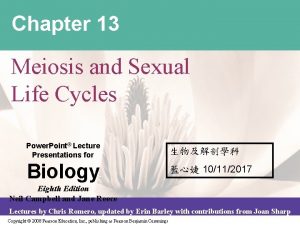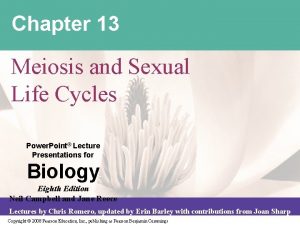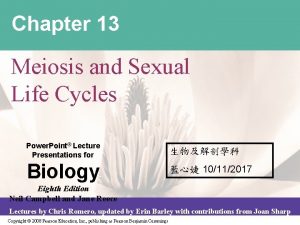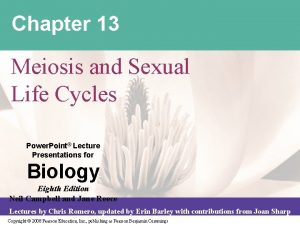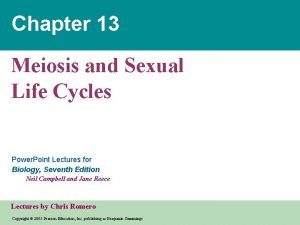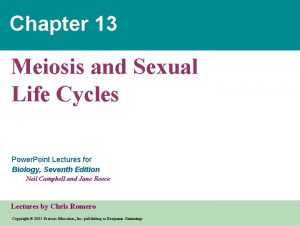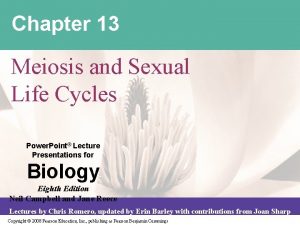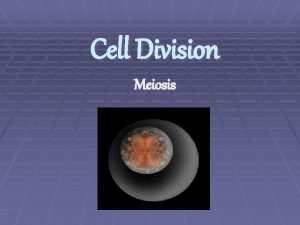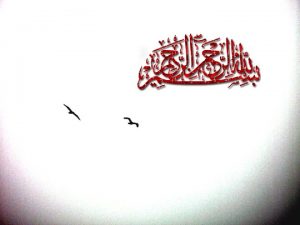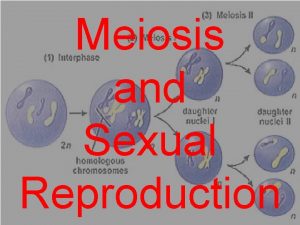Chapter 13 Meiosis and Sexual Life Cycles Power




























































- Slides: 60

Chapter 13 Meiosis and Sexual Life Cycles Power. Point® Lecture Presentations for Biology Eighth Edition Neil Campbell and Jane Reece Lectures by Chris Romero, updated by Erin Barley with contributions from Joan Sharp Copyright © 2008 Pearson Education, Inc. , publishing as Pearson Benjamin Cummings

Objectives 1. Distinguish between the following terms: somatic cell and gamete; autosome and sex chromosomes; haploid and diploid 2. Describe the events that characterize each phase of meiosis 3. Describe three events that occur during meiosis I but not mitosis 4. Name and explain the three events that contribute to genetic variation in sexually reproducing organisms Copyright © 2008 Pearson Education Inc. , publishing as Pearson Benjamin Cummings

Objectives 1. Distinguish between the following terms: somatic cell and gamete; autosome and sex chromosomes; haploid and diploid (see life cycle scheme page 251). Matrix 2. Describe the events that characterize each phase of meiosis. See sequence IPMAT-I, IPMAT-II, dip to hap 3. Describe three events that occur during meiosis I but not mitosis. 4. Name and explain the three events that contribute to genetic variation in sexually reproducing organisms. independent assortment, recombinant chromosomes random fertilization Copyright © 2008 Pearson Education Inc. , publishing as Pearson Benjamin Cummings

Phases of meiosis

Objectives 1. Distinguish between the following terms: somatic cell and gamete; autosome and sex chromosomes; haploid and diploid (see life cycle scheme page 251). Matrix 2. Describe the events that characterize each phase of meiosis. See sequence IPMAT-I, IPMAT-II, dip to hap 3. Describe three events that occur during meiosis I but not mitosis. 4. Name and explain the three events that contribute to genetic variation in sexually reproducing organisms. independent assortment, recombinant chromosomes random fertilization Copyright © 2008 Pearson Education Inc. , publishing as Pearson Benjamin Cummings

Mitosis vs Meiosis comparison

Objectives 1. Distinguish between the following terms: somatic cell and gamete; autosome and sex chromosomes; haploid and diploid (see life cycle scheme page 251). Matrix 2. Describe the events that characterize each phase of meiosis. See sequence IPMAT-I, IPMAT-II, dip to hap 3. Describe three events that occur during meiosis I but not mitosis. 4. Name and explain the three events that contribute to genetic variation in sexually reproducing organisms. independent assortment, recombinant chromosomes random fertilization Copyright © 2008 Pearson Education Inc. , publishing as Pearson Benjamin Cummings

Overview: Variations on a Theme • Living organisms are distinguished by their ability to reproduce their own kind • Genetics is the scientific study of heredity and variation • Heredity is the transmission of traits from one generation to the next • Variation is demonstrated by the differences in appearance that offspring show from parents and siblings Copyright © 2008 Pearson Education Inc. , publishing as Pearson Benjamin Cummings

Concept 13. 1: Offspring acquire genes from parents by inheriting chromosomes • In a literal sense, children do not inherit particular physical traits from their parents • It is genes that are actually inherited Copyright © 2008 Pearson Education Inc. , publishing as Pearson Benjamin Cummings

Inheritance of Genes • Genes are the units of heredity, and are made up of segments of DNA • Genes are passed to the next generation through reproductive cells called gametes (sperm and eggs) • Each gene has a specific location called a locus on a certain chromosome • Most DNA is packaged into chromosomes • One set of chromosomes is inherited from each parent Copyright © 2008 Pearson Education Inc. , publishing as Pearson Benjamin Cummings

Comparison of Asexual and Sexual Reproduction • In asexual reproduction, one parent produces genetically identical offspring by mitosis • A clone is a group of genetically identical individuals from the same parent • In sexual reproduction, two parents give rise to offspring that have unique combinations of genes inherited from the two parents Video: Hydra Budding Copyright © 2008 Pearson Education Inc. , publishing as Pearson Benjamin Cummings

Fig. 13 -2 0. 5 mm Parent Bud (a) Hydra (b) Redwoods

Concept 13. 2: Fertilization and meiosis alternate in sexual life cycles • A life cycle is the generation-to-generation sequence of stages in the reproductive history of an organism Copyright © 2008 Pearson Education Inc. , publishing as Pearson Benjamin Cummings

Sets of Chromosomes in Human Cells • Human somatic cells (any cell other than a gamete) have 23 pairs of chromosomes • A karyotype is an ordered display of the pairs of chromosomes from a cell • The two chromosomes in each pair are called homologous chromosomes, or homologs • Chromosomes in a homologous pair are the same length and carry genes controlling the same inherited characters Copyright © 2008 Pearson Education Inc. , publishing as Pearson Benjamin Cummings

Fig. 13 -3 b TECHNIQUE 5 µm Pair of homologous replicated chromosomes Centromere Sister chromatids Metaphase chromosome

Fig. 13 -4 Key 2 n = 6 Maternal set of chromosomes (n = 3) Paternal set of chromosomes (n = 3) Two sister chromatids of one replicated chromosome Two nonsister chromatids in a homologous pair Centromere Pair of homologous chromosomes (one from each set)

Fig. 13 -5 Key Haploid gametes (n = 23) Haploid (n) Egg (n) Diploid (2 n) Sperm (n) MEIOSIS Ovary FERTILIZATION Testis Diploid zygote (2 n = 46) Mitosis and development Multicellular diploid adults (2 n = 46)

Fig. 13 -6 Key Haploid (n) n Gametes n Mitosis n n MEIOSIS FERTILIZATION Diploid multicellular organism (a) Animals Zygote 2 n Mitosis n Spores Mitosis n n n MEIOSIS 2 n Haploid unicellular or multicellular organism Haploid multicellular organism (gametophyte) Diploid (2 n) Gametes Mitosis n n Gametes FERTILIZATION MEIOSIS 2 n Diploid multicellular organism (sporophyte) n 2 n Mitosis (b) Plants and some algae Zygote FERTILIZATION 2 n Zygote (c) Most fungi and some protists

Fig. 13 -6 a Key Haploid (n) Diploid (2 n) n Gametes n n MEIOSIS 2 n Diploid multicellular organism (a) Animals FERTILIZATION Zygote 2 n Mitosis

Fig. 13 -6 b Key Haploid (n) Diploid (2 n) Mitosis n Haploid multicellular organism (gametophyte) Mitosis n n Spores MEIOSIS Gametes FERTILIZATION 2 n Diploid multicellular organism (sporophyte) 2 n Mitosis (b) Plants and some algae Zygote

Fig. 13 -6 c Key Haploid (n) Haploid unicellular or multicellular organism Diploid (2 n) Mitosis n n Gametes MEIOSIS n FERTILIZATION 2 n Zygote (c) Most fungi and some protists

The Stages of Meiosis • In the first cell division (meiosis I), homologous chromosomes separate • Meiosis I results in two haploid daughter cells with replicated chromosomes; it is called the reduction division • In the second cell division (meiosis II), sister chromatids separate • Meiosis II results in four haploid daughter cells with un-replicated chromosomes; it is called the equational division Copyright © 2008 Pearson Education Inc. , publishing as Pearson Benjamin Cummings

Fig. 13 -7 -1 Interphase Homologous pair of chromosomes in diploid parent cell Chromosomes replicate Homologous pair of replicated chromosomes Sister chromatids Diploid cell with replicated chromosomes

Fig. 13 -7 -2 Interphase Homologous pair of chromosomes in diploid parent cell Chromosomes replicate Homologous pair of replicated chromosomes Sister chromatids Diploid cell with replicated chromosomes Meiosis I 1 Homologous chromosomes separate Haploid cells with replicated chromosomes

Fig. 13 -7 -3 Interphase Homologous pair of chromosomes in diploid parent cell Chromosomes replicate Homologous pair of replicated chromosomes Sister chromatids Diploid cell with replicated chromosomes Meiosis I 1 Homologous chromosomes separate Haploid cells with replicated chromosomes Meiosis II 2 Sister chromatids separate Haploid cells with unreplicated chromosomes

• Meiosis I is preceded by interphase, in which chromosomes are replicated to form sister chromatids • The sister chromatids are genetically identical and joined at the centromere • The single centrosome replicates, forming two centrosomes Bio. Flix: Meiosis Copyright © 2008 Pearson Education Inc. , publishing as Pearson Benjamin Cummings

Fig. 13 -8 a Prophase I Metaphase I Centrosome (with centriole pair) Sister chromatids Centromere (with kinetochore) Chiasmata Spindle Metaphase plate Sister chromatids remain attached Homologous chromosomes separate Homologous chromosomes Fragments of nuclear envelope Microtubule attached to kinetochore Telophase I and Cytokinesis Anaphase I Cleavage furrow

Fig. 13 -8 b Prophase I Metaphase I Centrosome (with centriole pair) Sister chromatids Chiasmata Spindle Centromere (with kinetochore) Metaphase plate Homologous chromosomes Fragments of nuclear envelope Microtubule attached to kinetochore

Fig. 13 -8 c Telophase I and Cytokinesis Anaphase I Sister chromatids remain attached Homologous chromosomes separate Cleavage furrow

• Division in meiosis II also occurs in four phases: – Prophase II – Metaphase II – Anaphase II – Telophase II and cytokinesis • Meiosis II is very similar to mitosis Copyright © 2008 Pearson Education Inc. , publishing as Pearson Benjamin Cummings

Fig. 13 -8 d Prophase II Metaphase II Anaphase II Telophase II and Cytokinesis Sister chromatids separate Haploid daughter cells forming

Fig. 13 -9 MITOSIS MEIOSIS Parent cell Chromosome replication Prophase Chiasma Chromosome replication Prophase I Homologous chromosome pair 2 n = 6 Replicated chromosome MEIOSIS I Metaphase I Anaphase Telophase Anaphase I Telophase I Haploid n=3 Daughter cells of meiosis I 2 n MEIOSIS II 2 n Daughter cells of mitosis n n Daughter cells of meiosis II SUMMARY Property Mitosis Meiosis DNA replication Occurs during interphase before mitosis begins Occurs during interphase before meiosis I begins Number of divisions One, including prophase, metaphase, and telophase Two, each including prophase, metaphase, and telophase Synapsis of homologous chromosomes Does not occur Occurs during prophase I along with crossing over between nonsister chromatids; resulting chiasmata hold pairs together due to sister chromatid cohesion Number of daughter cells and genetic composition Two, each diploid (2 n) and genetically identical to the parent cell Four, each haploid (n), containing half as many chromosomes as the parent cell; genetically different from the parent cell and from each other Role in the animal body Enables multicellular adult to arise from zygote; produces cells for growth, repair, and, in some species, asexual reproduction Produces gametes; reduces number of chromosomes by half and introduces genetic variability among the gametes

Fig. 13 -9 a MITOSIS MEIOSIS Parent cell Chromosome replication Prophase Chiasma Chromosome replication Prophase I Homologous chromosome pair 2 n = 6 Replicated chromosome MEIOSIS I Metaphase I Anaphase Telophase Anaphase I Telophase I Haploid n=3 Daughter cells of meiosis I 2 n Daughter cells of mitosis 2 n MEIOSIS II n n Daughter cells of meiosis II

Fig. 13 -9 b SUMMARY Property Mitosis Meiosis DNA replication Occurs during interphase before mitosis begins Occurs during interphase before meiosis I begins Number of divisions One, including prophase, metaphase, and telophase Two, each including prophase, metaphase, and telophase Synapsis of homologous chromosomes Does not occur Occurs during prophase I along with crossing over between nonsister chromatids; resulting chiasmata hold pairs together due to sister chromatid cohesion Number of daughter cells and genetic composition Two, each diploid (2 n) and genetically identical to the parent cell Four, each haploid (n), containing half as many chromosomes as the parent cell; genetically different from the parent cell and from each other Role in the animal body Enables multicellular adult to arise from zygote; produces cells for growth, repair, and, in some species, asexual reproduction Produces gametes; reduces number of chromosomes by half and introduces genetic variability among the gametes

• Three events are unique to meiosis, and all three occur in meiosis l: – Synapsis and crossing over in prophase I: Homologous chromosomes physically connect and exchange genetic information – At the metaphase plate, there are paired homologous chromosomes (tetrads), instead of individual replicated chromosomes – At anaphase I, it is homologous chromosomes, instead of sister chromatids, that separate Copyright © 2008 Pearson Education Inc. , publishing as Pearson Benjamin Cummings

• Sister chromatid cohesion allows sister chromatids of a single chromosome to stay together through meiosis I • Protein complexes called cohesins are responsible for this cohesion • In mitosis, cohesins are cleaved at the end of metaphase • In meiosis, cohesins are cleaved along the chromosome arms in anaphase I (separation of homologs) and at the centromeres in anaphase II (separation of sister chromatids) Copyright © 2008 Pearson Education Inc. , publishing as Pearson Benjamin Cummings

Concept 13. 4: Genetic variation produced in sexual life cycles contributes to evolution • Mutations (changes in an organism’s DNA) are the original source of genetic diversity • Mutations create different versions of genes called alleles • Reshuffling of alleles during sexual reproduction produces genetic variation Copyright © 2008 Pearson Education Inc. , publishing as Pearson Benjamin Cummings

Origins of Genetic Variation Among Offspring • The behavior of chromosomes during meiosis and fertilization is responsible for most of the variation that arises in each generation • Three mechanisms contribute to genetic variation: – Independent assortment of chromosomes – Crossing over – Random fertilization Copyright © 2008 Pearson Education Inc. , publishing as Pearson Benjamin Cummings

Fig. 13 -11 -1 Possibility 2 Possibility 1 Two equally probable arrangements of chromosomes at metaphase I

Fig. 13 -11 -2 Possibility 1 Two equally probable arrangements of chromosomes at metaphase I Metaphase II

Fig. 13 -11 -3 Possibility 2 Possibility 1 Two equally probable arrangements of chromosomes at metaphase I Metaphase II Daughter cells Combination 1 Combination 2 Combination 3 Combination 4

Crossing Over • Crossing over produces recombinant chromosomes, which combine genes inherited from each parent • Crossing over begins very early in prophase I, as homologous chromosomes pair up gene by gene Copyright © 2008 Pearson Education Inc. , publishing as Pearson Benjamin Cummings

Fig. 13 -12 -1 Prophase I of meiosis Pair of homologs Nonsister chromatids held together during synapsis

Fig. 13 -12 -2 Prophase I of meiosis Pair of homologs Chiasma Centromere TEM Nonsister chromatids held together during synapsis

Fig. 13 -12 -3 Prophase I of meiosis Pair of homologs Chiasma Centromere TEM Anaphase I Nonsister chromatids held together during synapsis

Fig. 13 -12 -4 Prophase I of meiosis Pair of homologs Chiasma Centromere TEM Anaphase II Nonsister chromatids held together during synapsis

Fig. 13 -12 -5 Prophase I of meiosis Pair of homologs Nonsister chromatids held together during synapsis Chiasma Centromere TEM Anaphase II Daughter cells Recombinant chromosomes

Random Fertilization • Random fertilization adds to genetic variation because any sperm can fuse with any ovum (unfertilized egg) • The fusion of two gametes (each with 8. 4 million possible chromosome combinations from independent assortment) produces a zygote with any of about 70 trillion diploid combinations Copyright © 2008 Pearson Education Inc. , publishing as Pearson Benjamin Cummings

• Crossing over adds even more variation • Each zygote has a unique genetic identity Animation: Genetic Variation Copyright © 2008 Pearson Education Inc. , publishing as Pearson Benjamin Cummings

The Evolutionary Significance of Genetic Variation Within Populations • Natural selection results in the accumulation of genetic variations favored by the environment • Sexual reproduction contributes to the genetic variation in a population, which originates from mutations Copyright © 2008 Pearson Education Inc. , publishing as Pearson Benjamin Cummings

Fig. 13 -UN 1 Prophase I: Each homologous pair undergoes synapsis and crossing over between nonsister chromatids. Metaphase I: Chromosomes line up as homologous pairs on the metaphase plate. Anaphase I: Homologs separate from each other; sister chromatids remain joined at the centromere.

Fig. 13 -UN 2 F H

Fig. 13 -UN 4

You should now be able to: 1. Distinguish between the following terms: somatic cell and gamete; autosome and sex chromosomes; haploid and diploid 2. Describe the events that characterize each phase of meiosis 3. Describe three events that occur during meiosis I but not mitosis 4. Name and explain the three events that contribute to genetic variation in sexually reproducing organisms Copyright © 2008 Pearson Education Inc. , publishing as Pearson Benjamin Cummings

Objectives 1. Distinguish between the following terms: somatic cell and gamete; autosome and sex chromosomes; haploid and diploid (see life cycle scheme page 251). Matrix 2. Describe the events that characterize each phase of meiosis. See sequence IPMAT-I, IPMAT-II, dip to hap 3. Describe three events that occur during meiosis I but not mitosis. 4. Name and explain the three events that contribute to genetic variation in sexually reproducing organisms. independent assortment, recombinant chromosomes random fertilization Copyright © 2008 Pearson Education Inc. , publishing as Pearson Benjamin Cummings

Phases of meiosis

Objectives 1. Distinguish between the following terms: somatic cell and gamete; autosome and sex chromosomes; haploid and diploid (see life cycle scheme page 251). Matrix 2. Describe the events that characterize each phase of meiosis. See sequence IPMAT-I, IPMAT-II, dip to hap 3. Describe three events that occur during meiosis I but not mitosis. 4. Name and explain the three events that contribute to genetic variation in sexually reproducing organisms. independent assortment, recombinant chromosomes random fertilization Copyright © 2008 Pearson Education Inc. , publishing as Pearson Benjamin Cummings

Mitosis vs Meiosis comparison

Objectives 1. Distinguish between the following terms: somatic cell and gamete; autosome and sex chromosomes; haploid and diploid (see life cycle scheme page 251). Matrix 2. Describe the events that characterize each phase of meiosis. See sequence IPMAT-I, IPMAT-II, dip to hap 3. Describe three events that occur during meiosis I but not mitosis. 4. Name and explain the three events that contribute to genetic variation in sexually reproducing organisms. independent assortment, recombinant chromosomes random fertilization Copyright © 2008 Pearson Education Inc. , publishing as Pearson Benjamin Cummings

Totipotent vs. Pluripotent, embryonic stem cells originate as inner mass cells within a blastocyst. The stem cells can become any tissue in the body, excluding a placenta. Only the morula's cells are totipotent, able to become all tissues and a placenta.
 виды проектов
виды проектов Chapter 13 meiosis and sexual life cycles
Chapter 13 meiosis and sexual life cycles Meiosis genetic variation
Meiosis genetic variation Section quick check chapter 10 section 1 meiosis answer key
Section quick check chapter 10 section 1 meiosis answer key Chapter 10 meiosis 1 and meiosis 2 answer key
Chapter 10 meiosis 1 and meiosis 2 answer key Section 1 meiosis
Section 1 meiosis Chapter 10 section 3 gene linkage and polyploidy
Chapter 10 section 3 gene linkage and polyploidy Difference between meiosis 1 and 2
Difference between meiosis 1 and 2 Style fashion and fad life cycles
Style fashion and fad life cycles Plant life cycles and alternation of generations
Plant life cycles and alternation of generations Vapour power cycles
Vapour power cycles Disvantages of sexual reproduction
Disvantages of sexual reproduction Meiosis 1
Meiosis 1 Prohase 2
Prohase 2 Carbon cycle poem
Carbon cycle poem Correct order
Correct order Kiwi bird life cycle
Kiwi bird life cycle Section 26.3 life cycles of stars
Section 26.3 life cycles of stars What is charted on an hr diagram
What is charted on an hr diagram Club fungi life cycle
Club fungi life cycle Cycling of matter in an ecosystem
Cycling of matter in an ecosystem Power triangle
Power triangle Compare and contrast carbon and nitrogen cycles
Compare and contrast carbon and nitrogen cycles Mendelian genetics
Mendelian genetics Chapter 10 sexual reproduction and genetics
Chapter 10 sexual reproduction and genetics Stockspotter
Stockspotter Human life cycle
Human life cycle Chapter 20 sexual reproduction in animals
Chapter 20 sexual reproduction in animals Mandarin cycles
Mandarin cycles Biogeochemical cycles of water
Biogeochemical cycles of water Model for improvement
Model for improvement Precession milankovitch cycles
Precession milankovitch cycles Transaction cycle flow chart
Transaction cycle flow chart Cpi cycles per instruction
Cpi cycles per instruction Biogeochemical cycles water cycle
Biogeochemical cycles water cycle Apes nutrient cycles
Apes nutrient cycles The major abiotic reservoir for phosphorus is
The major abiotic reservoir for phosphorus is Biogeochemical cycle quiz
Biogeochemical cycle quiz Enam securities portfolio
Enam securities portfolio Joke cycles
Joke cycles Joke cycles
Joke cycles Biogeochemical cycles class 9 ppt
Biogeochemical cycles class 9 ppt Sleep wake cycle
Sleep wake cycle Cell cycle foldable project
Cell cycle foldable project Design science research cycles
Design science research cycles Biogeochemical cycles poster
Biogeochemical cycles poster Tujuan pdsa
Tujuan pdsa Alphonse mucha ads
Alphonse mucha ads Performance management cycle definition
Performance management cycle definition Water cycles of matter
Water cycles of matter Isagenix pay structure
Isagenix pay structure Multiplication of cycles
Multiplication of cycles Per instruction
Per instruction Tidal patterns
Tidal patterns 4 major biogeochemical cycles
4 major biogeochemical cycles Carbon cycle pearson education
Carbon cycle pearson education Mandarin cycles
Mandarin cycles Tsw cycles
Tsw cycles Business cycles economics
Business cycles economics Per capita real gdp formula
Per capita real gdp formula Paragraph about global warming
Paragraph about global warming

